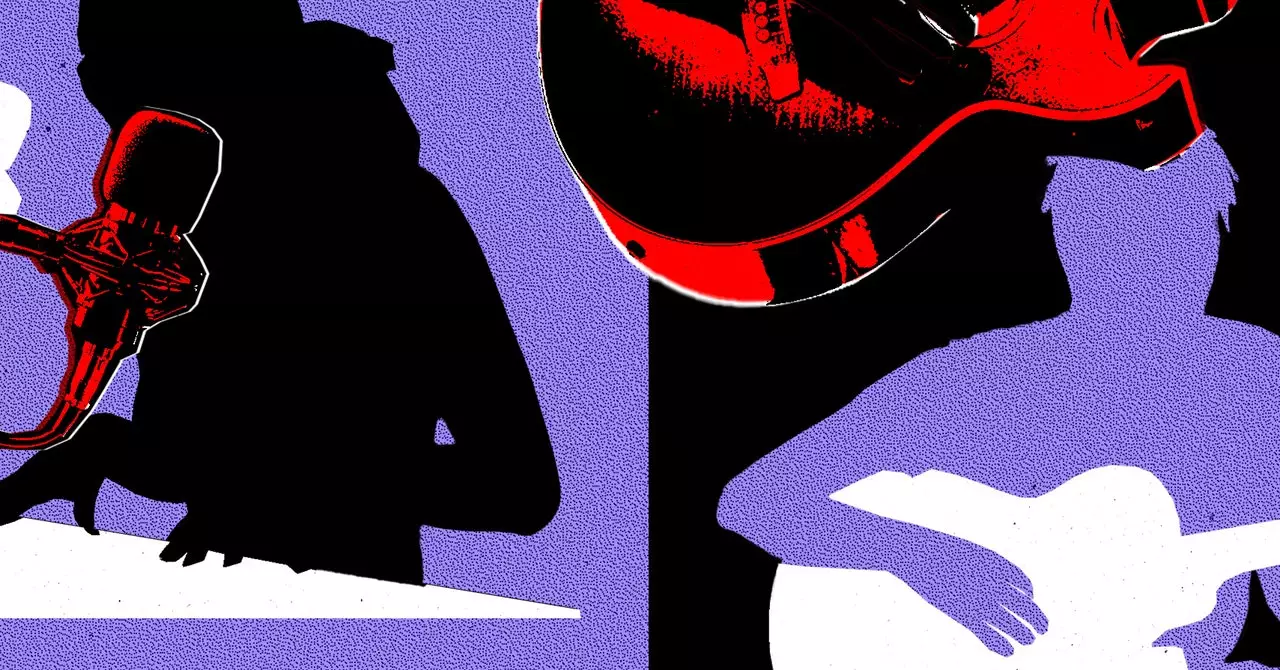As the music industry evolves, artificial intelligence (AI) has seamlessly entered the realm of music production, presenting both opportunities and challenges for creators. Unlike traditional AI tools that generate music from scratch, a wide array of tools is now available for extracting stems, mixing, mastering, and even brainstorming lyrics. This evolution has sparked interest among both amateur musicians and seasoned professionals, resulting in a diverse landscape that requires critical examination.
AI tools have transformed the music-making process, offering unprecedented functionalities that can streamline workflows. However, it is crucial to identify where these tools fit within the creative process. For instance, pop songwriter Sam Hollander, known for his collaborations with artists like Panic! at the Disco, draws parallels between present-day AI and the rise of drum machines in the 1980s. Just as session drummers had to evolve and adapt their skills to incorporate technology into their work, modern musicians face a similar choice with AI.
Hollander’s experience reflects a common use case: working alongside a UK grime producer who utilized AI tools such as Suno and Udio to generate samples from genres like funk and soul. Upon identifying a desirable sample, the producer employed an additional AI tool to isolate stems for inclusion in a track. This anecdote underscores how AI can enhance creativity, but it also raises questions about the balance between technology and human input in music creation.
The dynamic nature of AI’s integration into music has created two distinct factions among musicians. Some believe that the essence of music should remain organic and view AI as an existential threat. Recently, thousands of industry professionals signed a letter denouncing AI training methods, arguing that these practices jeopardize the livelihoods of original creators. On the other hand, the more adaptable musicians, like Hollander, embrace AI as a valuable tool, integrating it into their workflows.
This divergence points toward an inevitable crossroads in the music industry. While one segment clings to traditional methods, another is eagerly harnessing AI’s potential to augment their craft. The latter group recognizes that retaining a human touch—especially in the form of original lyrics and clever concepts—can elevate AI-generated music beyond mediocrity.
One of the current limitations of AI-generated content is its inability to fully capture the nuances of humor and creative expression. Notably, lyricist Hatcher asserts that AI struggles with humor and relies on human input to produce meaningful and engaging compositions. Without original lyrics or hand-crafted elements, the output can come off as bland or formulaic. Hatcher’s approach—combining AI tools for brainstorming with his authentic lyric crafting—serves as a successful model for those seeking to strike a balance in their music production.
Moreover, the appeal of AI-enhanced music often lies in its novelty factor. Successful AI projects like the viral SpongeBob rap highlight how a shock factor can create intrigue, while other AI-generated content, such as “lost” album tracks, can similarly captivate audiences. However, this novelty can quickly wear off, leading to a saturated market of uninspired, background-style AI music.
Transforming the Ambient Music Scene
Conversely, there’s a burgeoning market for AI-generated ambient and chill music, which appears to be gaining mainstream traction. Channels like “Home Alone” and “what is ?” exemplify how AI can quietly produce compositions that resonate with listeners, all while maintaining a level of anonymity regarding the tool’s usage. These channels emphasize that the initial phase of experimentation with AI tools has now led to outputs that are increasingly indistinguishable from human-made compositions.
The growing popularity of AI-generated ambient music suggests that these creations can stand on their own, serving as atmospheric soundtracks for various activities. The blend of technology with traditional music-making practices has set the stage for a future where AI could redefine genres and cultivate new styles.
A Future of Collaboration
In summation, AI’s role in music production is a complex web of opportunities and threats, making it essential for musicians to navigate this landscape thoughtfully. While some aim to preserve the artistry of music through organic practices, others are integrating AI into their creative processes, allowing for innovation and experimentation. Ultimately, the future may lie in collaboration—where human creativity harmonizes with the efficiencies of AI, resulting in a richer, more diverse musical ecosystem that celebrates both technology and traditional artistry. The journey ahead is one of adaptation, requiring a careful balance to ensure that AI enhances rather than replaces the unique essence of musical expression.


Leave a Reply